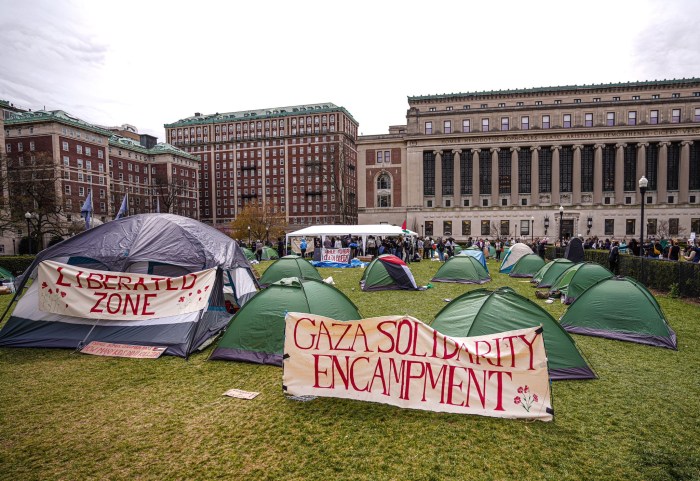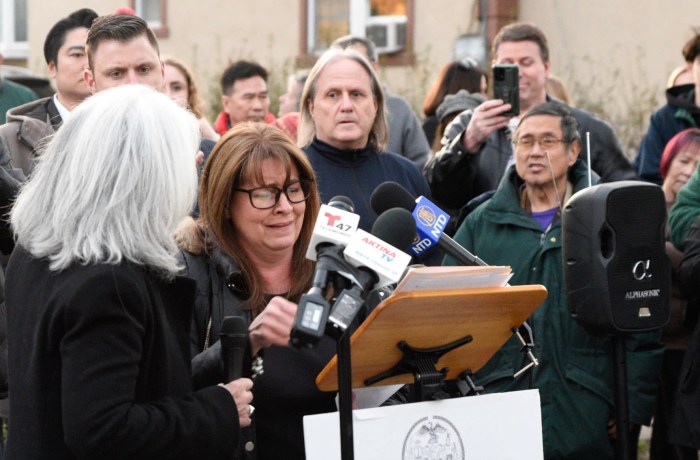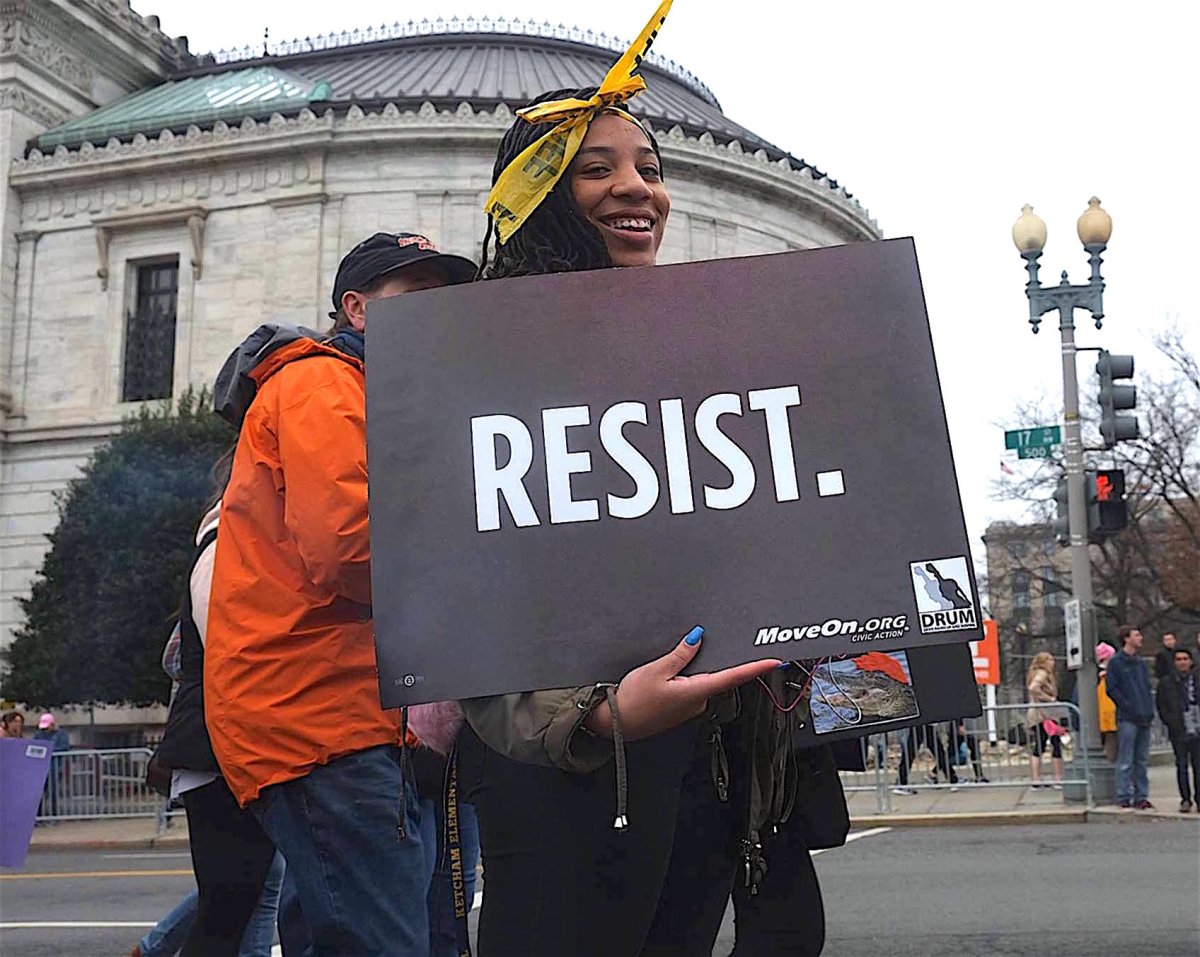
BY SARAH FERGUSON | For Donald Trump, size matters.
So it was immensely gratifying to be part of what turned into the largest demonstration in the history of the U.S last Saturday — as more than 5 million people here and around the globe rose up to denounce Trump and his misogyny the day after his inauguration.
Don’t believe the media outlets lowballing the turnout.
In Washington, D.C., at least a million women, men and children showed up to protest — a veritable tsunami of pink hats — united in our opposition to Trump and his retrograde administration.

Organizers put the final count at 1.3 million, while satellite photos show a sea of protestors filling the avenues around the While House — far larger than the paltry crowd that came out for Trump’s swearing-in.
It was so big, it was hard to move or find anyone. At 10 a.m. I set off in search of a large contingent of New Yorkers marching with handcrafted Statue of Liberty torches under the banner of “We Make America.” But I could not get to them.
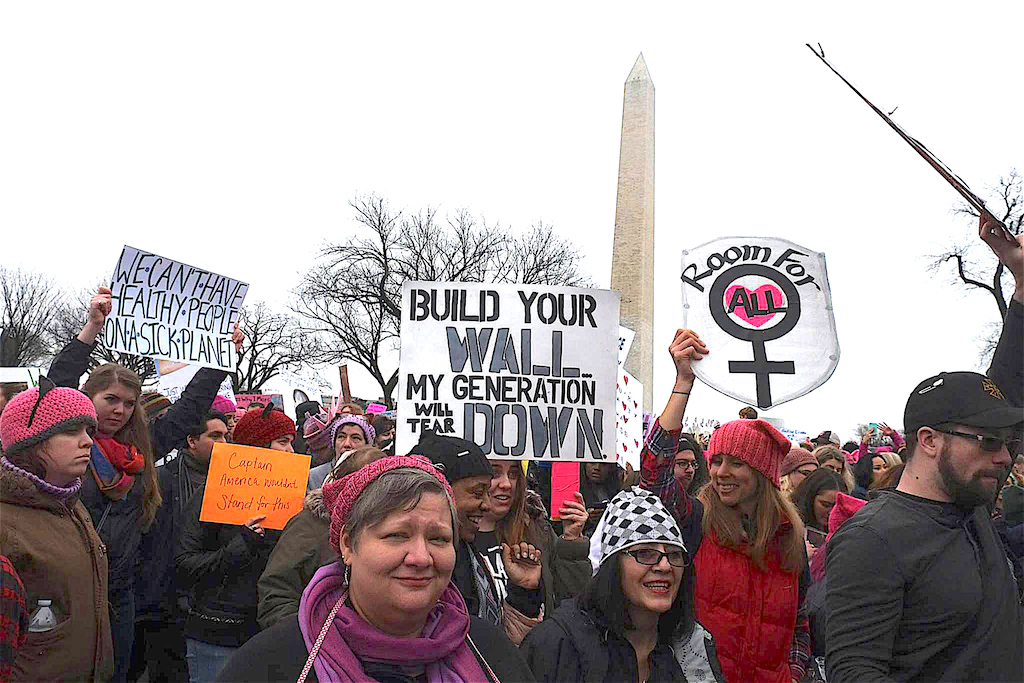
The metro was flooded with so many people that many stations shut down, and the stops near the main rally stage at Third St. and Independence Ave. were closed. The closest I got to the stage was four blocks west on Seventh St., where I found myself squished against a line of porta-potties — we could barely open the doors to let people in to pee.

We couldn’t see or hear the stage. Virtually all the cell networks were jammed — though a few people managed to livestream the show from their smart phones on speaker. Even then, you could barely catch what anyone said.
“Let us March!” people chanted. We wanted to move! But the organizers could not hear us.
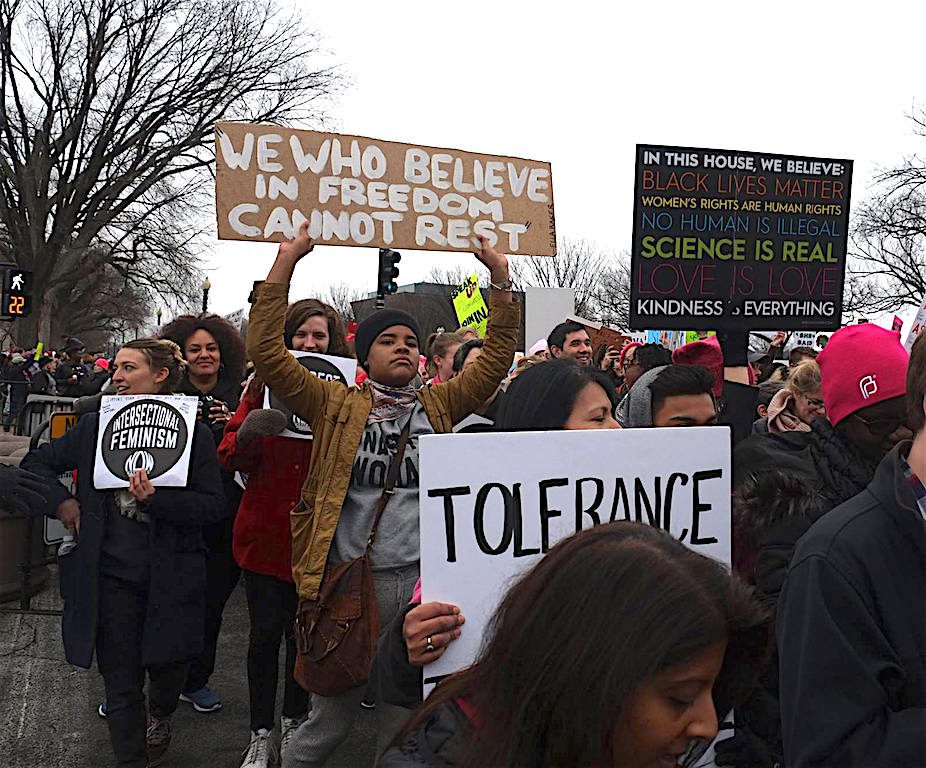
It felt like the organizers had spent too long arguing over the inclusiveness of their platform and the speaker list — leaving the actual mechanics of the march to chance. There were no safety lines for emergency vehicles, and barely any stewards to help clear the way when the ambulances plowed through. That formulaic march apparatus in place during the massive antiwar demos of the Bush administration seemed strangely absent.

All this was frustrating — albeit understandable. This march was organized on the fly, in just 11 weeks, led by women who had not worked together much before. It evolved from a Facebook post by a retired attorney in Hawaii that went viral in the wake of Hillary Clinton’s surprise defeat, then expanded to attract more diverse organizers of color. Only later on, when the momentum was overwhelming, did big organizational backers like Planned Parenthood and NARAL join in.
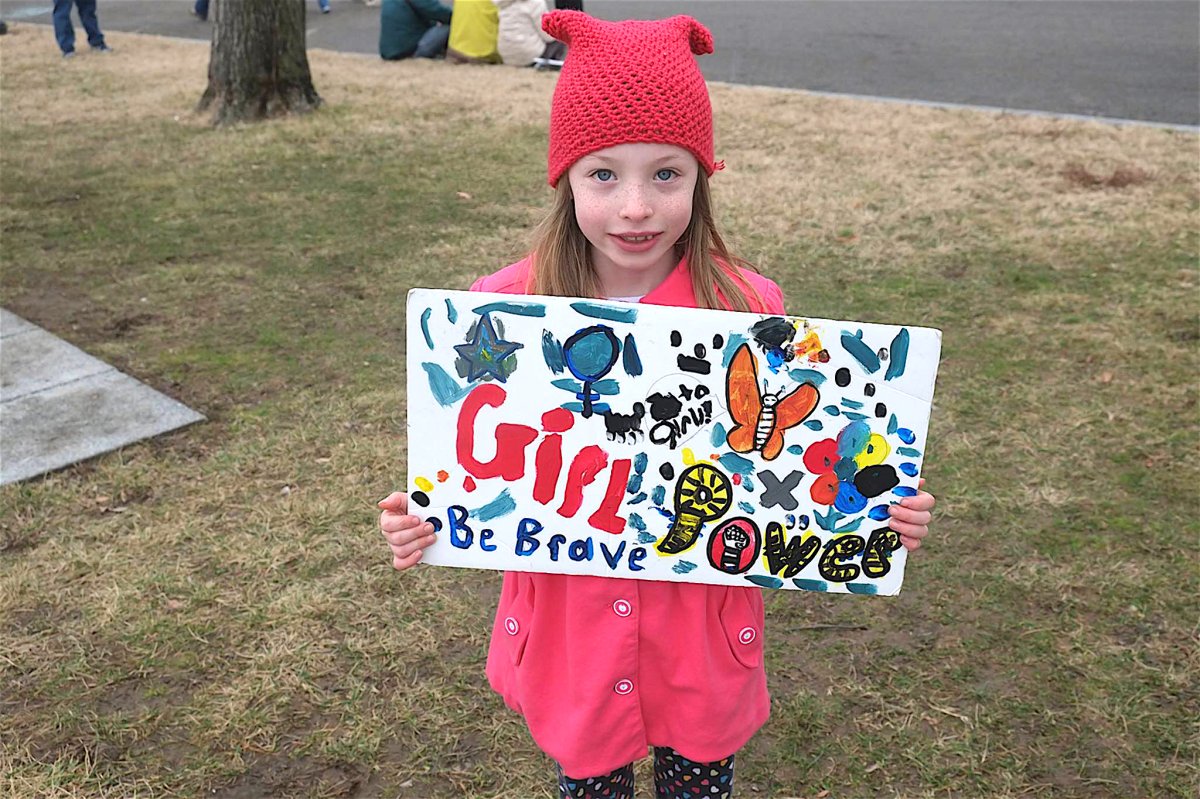
But in the end, the disconnect between stage and street didn’t matter. We were too big to fail. By being such an equal-opportunity offender, Trump has become our villain in chief — capable, for now at least, of mobilizing diverse groups to oppose him with an urgency not seen in decades.
When we finally set off, we found the march route to the Ellipse had been changed, and then apparently abandoned — there were just too many people on the streets. People sang “My Country Tis of Thee,” alongside folks chanting “Black Lives Matter!” Many white middle-class women chimed in.
It was exhilarating.

“We Want a Leader, Not a Creepy Tweeter!” we yelled. “Trump Pence, That S–t Don’t Make No Sense!”
Teneesha Tate Robinson, a 26-year-old student from Bowie, Maryland, marched with a Black Lives Matter sweatshirt and a handmade sign that said “Feminist as F–k.”
“Before, I kept myself informed about politics. But now I want to take action. Trump’s ran us back to the 1960s, and that’s unacceptable, especially for my people,” said Robinson, who is black.
Although there were sister marches in some 600 cities, many women told me they felt compelled to come to D.C. and be counted.

“I wanted a place and my face in history right here,” said Ellen Whyte, who took a plane from Oregon City. “We’ll go home and continue to resist. But this feels like the ribbon-cutting ceremony for the progressive movement. Now we have traction. We have until Nov. 3, 2020 [the date of the next presidential election], to really make something happen.”
Others don’t expect Trump’s presidency to last that long.
“I give him six months,” quipped Melanie Magness, a human-resources manager from Annapolis, Maryland, who marched with her lesbian daughter and the word “NASTY” written across her face in black eyeliner.

Some women had bought plane tickets to D.C. to attend what they thought would be Hillary Clinton’s historic inauguration — then switched gears when Trump won and decided to protest instead. Tania Sotello said she and her friends took a plane from Miami that was three-quarters full of women and men coming to the march.
“I owe it to my kids to speak up and not be silent,” she said.

Many had never been to a big D.C. protest before. Karrie Morgan, a 43-year-old financial analyst, boarded a bus at 2 a.m. and rode all the way from Greenboro, North Carolina,
“Liberals like me have been kind of oblivious for a long time,” she confessed. “This is so amazing. I’ve been on the verge of tears all day long. It makes me want to go home and get active locally and start some kind of women’s movement in Greensboro. I mean, I’ve never even been to a City Council meeting where I live. Now I feel that I have to. It’s a privilege to be in our democracy. We have to participate.”
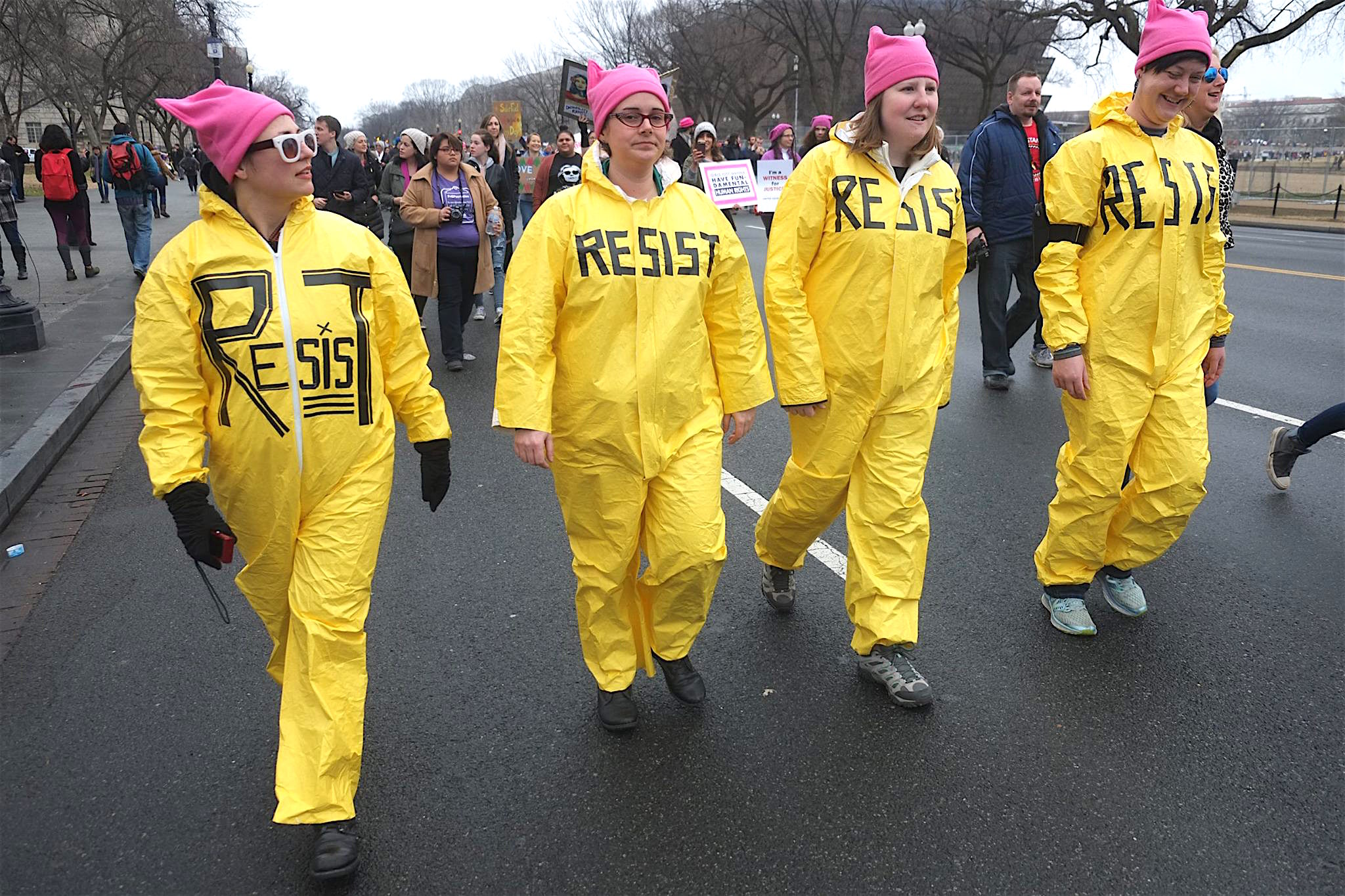
Debbie Stringfellow, a hospice nurse, drove overnight with friends from Canton, Ohio.
“There is a scary movement from the right that I haven’t seen since I was a kid,” she said, when asked why she came. “Trump just rode this wave of bigotry, and he doesn’t even know what it is. But it’s becoming an ‘us-versus-them’ thing. If we don’t stop it, it’s just gong to keep going. We can’t be quiet. We can’t keep bending over for Trump.”
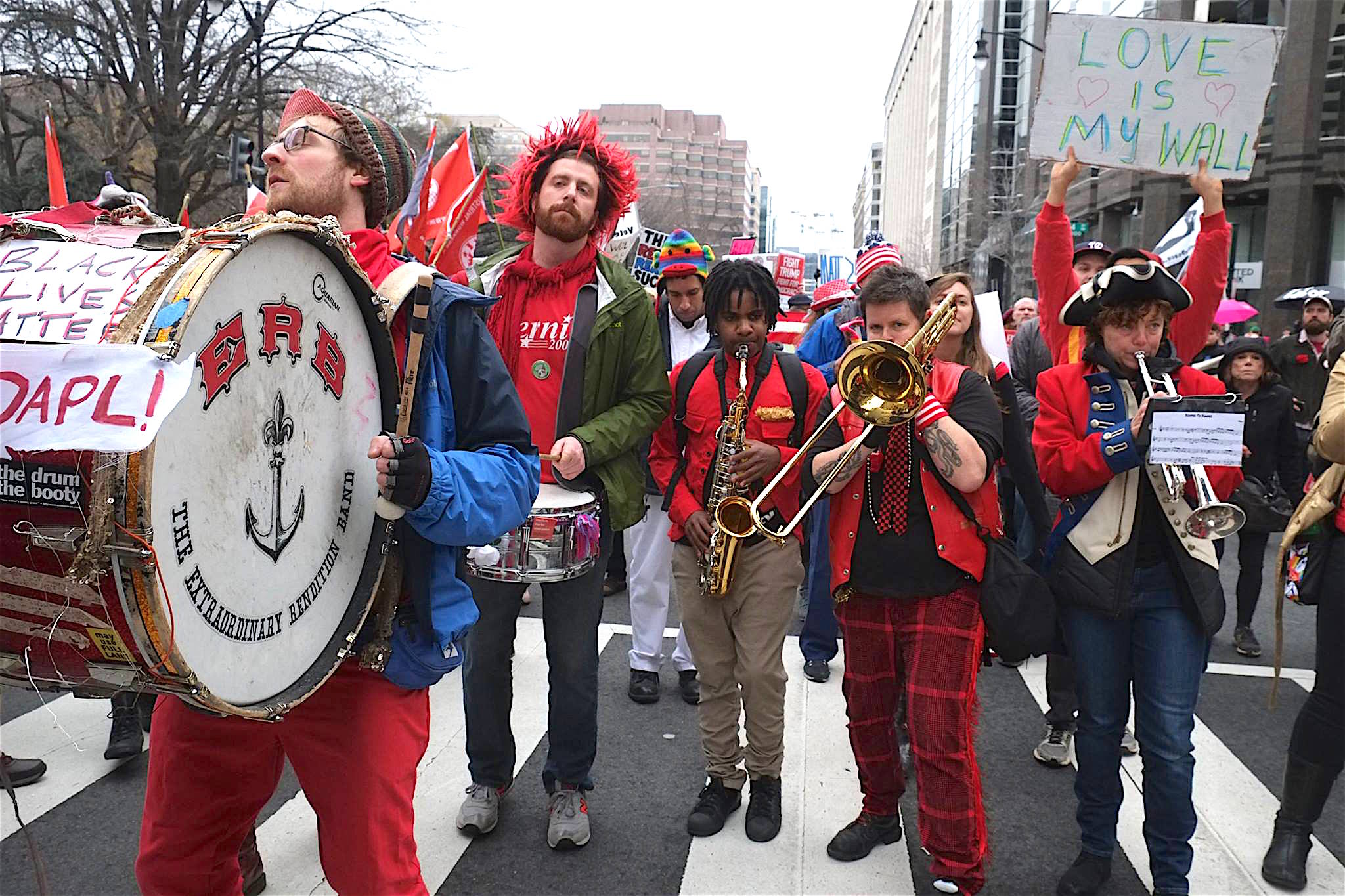
Even after the official demonstration ended, people continued to flood the streets until early evening, blocking buses and cars, whose drivers seemed remarkably tolerant of the lengthy disruption. The police did not bother to intervene.

“The women’s march was done with not a lot of infrastructure in place,” observed writer L.A. Kauffman, who gave me a lift home to New York City the following day. “But the momentum was so great, I think it’s going to come.
“And it will come in the form of lots and lots of autonomous but networked groups working on different issues in various ways, but all moving forward with a political vision of equality and freedom that we haven’t seen on this scale,” she predicted.
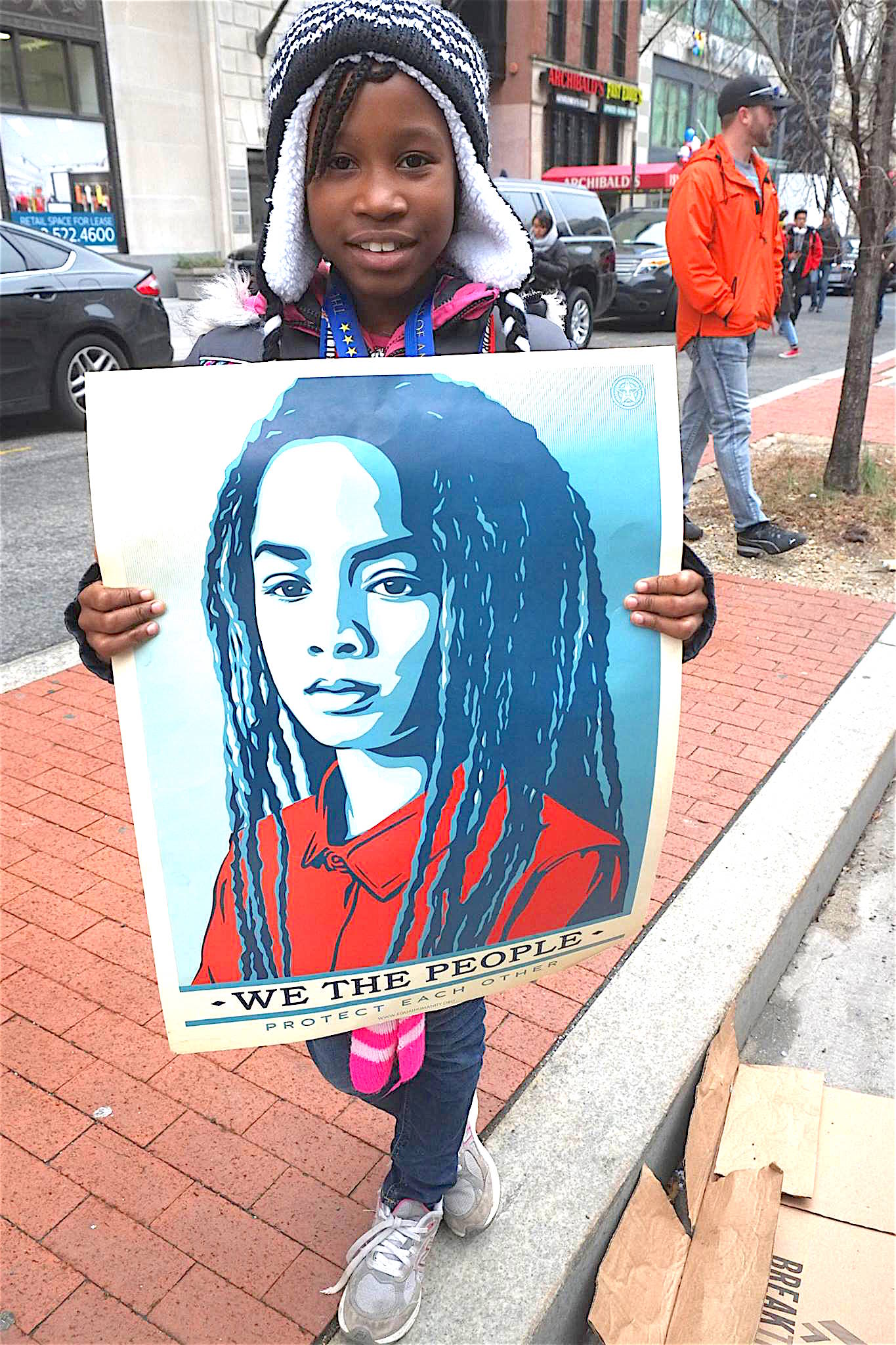
A former organizer with United for Peace and Justice — the group that staged many of the big antiwar demo’s under Bush — Kauffman has some perspective on all this. She just published a book called “Direct Action” (Verso) that analyzes the history of American radicalism since the 1960s.
“What we saw in the organizing of this march was a shift away from the white corporate feminism embodied by Clinton toward a more grassroots, intersectional feminism, which is the way forward for the movement,” Kauffman said. “It’s about understanding that race, sexuality, class and economics are absolutely at the center of any struggles around gender equality.
“Women of all backgrounds have to be at the center of the movement to resist Trump.”











